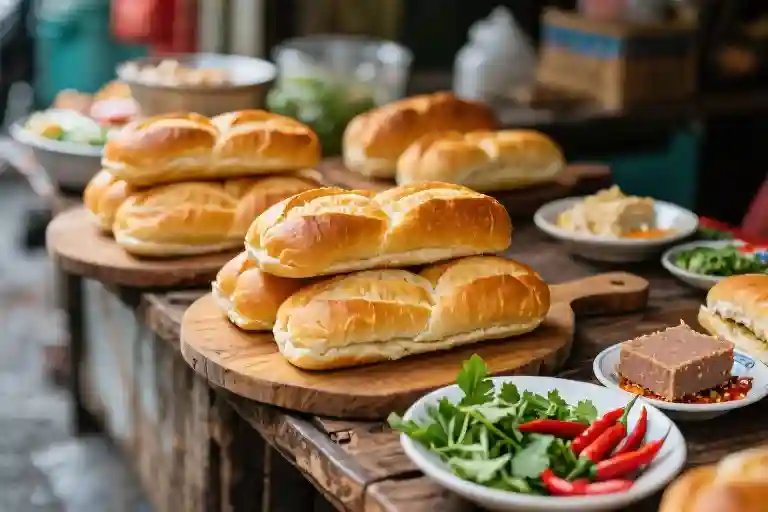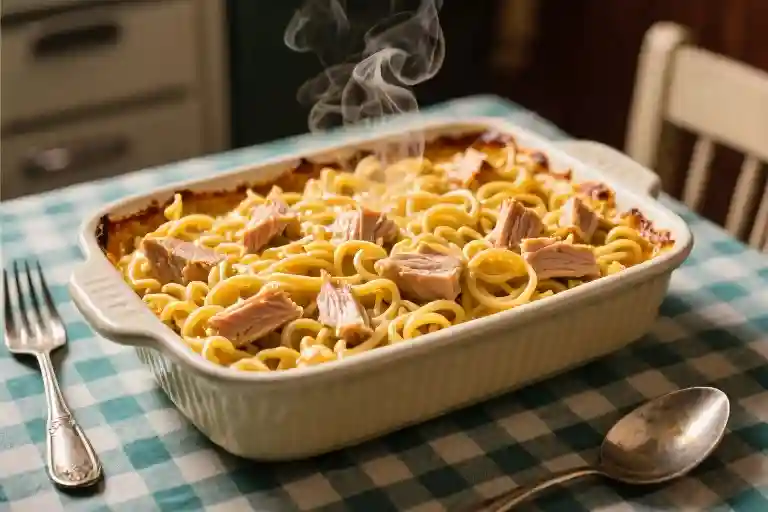The morning light barely filtered through the curtains of the Da Nang quarantine facility when the breakfast delivery arrived. Five rock-hard baguettes thudded against the floor, their hollow sound echoing in the sparse room where the Korean tourists had spent three sleepless nights. One traveler later described the scene to Seoul reporters: ‘We stared at those sad loaves, wondering if this counted as food at all.’
Within hours, Vietnamese social media platforms erupted like a pressure cooker left unattended. The hashtag #BanhMiShame trended with over 200,000 mentions, accompanied by memes comparing the quarantine bread to construction materials. Food bloggers posted side-by-side photos of glorious street vendor banh mi versus the offending specimens, while historians shared archival images of French colonial banquets – the cultural subtext impossible to miss.
This wasn’t just about stale bread. The incident tapped into something deeper in the Vietnamese psyche, a peculiar phenomenon where culinary critique transforms into cultural combat. That indignant response pattern has repeated throughout modern history whenever foreign commentary – however innocently intended – brushes against Vietnamese food identity.
The pattern reveals itself in curious ways. When a travel vlogger once referred to pho as ‘Vietnamese ramen,’ the correction posts outnumbered her original video views. Nutrition articles suggesting modifications to traditional recipes consistently attract more defensive comments than scientific rebuttals. There’s an unspoken rule here: you can question many aspects of Vietnamese life, but the cuisine exists in a sacred space beyond casual critique.
What makes food such a sensitive touchstone? The answer might lie in those very baguettes that sparked the controversy. Vietnam’s relationship with its most famous bread encapsulates centuries of cultural adaptation – a French colonial import that became a national symbol through wartime ingenuity and post-war reinvention. To dismiss banh mi is to overlook this hard-won culinary alchemy.
The Baguette Storm in Quarantine
The morning of February 28, 2020 began like any other day in Da Nang’s quarantine facility – until five stale baguettes landed on plastic trays with a thud that would echo across Vietnamese social media. Korean tourists documenting their quarantine experience didn’t anticipate how their complaints about breakfast would trigger what anthropologists now call “The Great Bánh Mì Uprising.”
Within hours, Vietnamese netizens divided into three distinct camps. About 62% expressed outright fury, flooding comment sections with historical photos of French-colonial era bakeries. “They don’t understand these crumbs hold our ancestors’ sweat,” wrote one user alongside a 1954 image of street vendors adapting French baking techniques. Another 28% responded with defensive humor, creating memes of superhero baguettes protecting Vietnam’s culinary honor. The remaining 10% attempted cultural mediation, explaining how Vietnam transformed this colonial import into a national treasure through fillings like pâté and cilantro.
Media narratives split along national lines. Korean outlets framed the story as a basic quarantine standards issue, with The Chosun Ilbo running the headline “Unhygienic Conditions in Vietnamese Isolation.” Meanwhile, Tuổi Trẻ countered with “Bánh Mì Diplomacy: When Food Becomes Cultural Armor,” interviewing third-generation bakers about the bread’s wartime significance. This wasn’t merely about breakfast – it was about the seven decades Vietnam spent reclaiming foreign ingredients as their own.
The incident revealed how culinary discourse operates on different frequencies across cultures. Where international viewers saw an isolated complaint about food quality, Vietnamese audiences heard echoes of historical marginalization. Food anthropologist Dr. Lê Minh noted in her analysis: “The baguette stopped being French when street vendors made it survive monsoons. What appears as culinary nationalism is actually the protection of adaptation narratives.”
Social media metrics showed the storm’s unusual trajectory. Unlike typical outrage cycles peaking at 48 hours, engagement grew steadily for eleven days as users unearthed archival recipes and personal food memories. The most shared content wasn’t angry rants but grandmothers demonstrating proper bánh mì preparation – a quiet insistence that some things demand proper context.
What began as a quarantine log became a masterclass in cultural semantics. The tourists’ original complaint contained no malice, yet their word choice (“dry,” “unappetizing”) inadvertently dismissed a complex culinary evolution. In Vietnam’s collective consciousness, criticizing bánh mì preparation isn’t about taste – it’s about invalidating an entire history of culinary resilience.
Taste Buds and National Scars
The story of Vietnam’s banh mi is more than culinary evolution—it’s a chronicle of resilience written in flour and pâté. That humble baguette Koreans complained about during quarantine carries centuries of cultural adaptation in its crust.
The Three Revolutions of Vietnamese Baguette
First came the colonial transplant in the 1860s, when French bakers introduced wheat flour to rice-dominated diets. Locals initially rejected the foreign bread until street vendors performed culinary alchemy—splitting the crusty loaves and stuffing them with cilantro, chili, and grilled pork. This first reinvention turned an imposed food into something distinctly Vietnamese.
Post-1954 marked the second revolution. As wheat imports vanished during wartime embargoes, bakers blended rice flour into the dough, creating the slightly chewier texture that defines authentic banh mi today. My neighbor Mrs. Lan, whose family has run a bakery since 1962, recalls trading bread for medicine: “During Tet offensive, we baked in bomb shelters. That smell of warm bread meant we were still alive.”
The third transformation came with doi moi economic reforms. Street vendors elevated the sandwich into edible artistry—adding pickled daikon, fried shallots, and multiple protein layers. The banh mi became Vietnam’s answer to fast food, yet each region developed signature variations: Hanoi’s minimalist elegance, Saigon’s overflowing abundance, Hue’s spicy complexity.
War Crumbs: Food Memory in Living Testimony
Oral histories collected at the Ho Chi Minh City Food Museum reveal how scarcity shaped national eating habits. Elderly residents describe stretching single baguettes across entire families during the American War. “We’d soak stale bread in condensed milk,” recounts Mr. Nguyen, 72. “Children learned to savor each crumb like it might be the last.”
This collective memory explains why modern complaints about “unappetizing” banh mi trigger visceral reactions. For Vietnamese elders, even dry bread symbolizes survival—a stark contrast to tourists expecting Instagram-worthy meals. The cultural disconnect becomes painfully clear in Da Nang quarantine footage showing untouched sandwiches stacked like fallen soldiers.
The Banh Mi Stall as Cultural Embassy
Contemporary street vendors have unwittingly become guardians of national identity. At Saigon’s famous Banh Mi Huynh Hoa, third-generation owner Linh curates what she calls “edible propaganda”—overstuffed sandwiches that deliberately showcase Vietnam’s agricultural abundance. “Foreigners think banh mi is just bread,” she says while layering three types of pork. “I make sure they taste our history in every bite.”
University cultural studies note an intriguing pattern: banh mi stalls near tourist areas intentionally amplify traditional elements—extra herbs, visible pâté spreading, dramatic chopping sounds—performing “Vietnamese-ness” through food theater. Meanwhile, neighborhood shops catering to locals focus purely on taste, their unpretentious sandwiches carrying quiet cultural confidence.
This duality reflects Vietnam’s complex relationship with its culinary identity—both fiercely proud and subtly insecure, like a war veteran wearing medals beneath his shirt. When outsiders dismiss that hard-won identity, even through something as small as complaining about quarantine meals, they unknowingly press on unhealed historical bruises.
Global Dining Tables as Cultural Minefields
The uproar over Vietnamese banh mi finds its echoes across international borders, where culinary traditions become battlegrounds for cultural identity. These conflicts reveal how deeply food intertwines with national pride, often catching unsuspecting outsiders in crossfires of gastronomic nationalism.
Italy’s infamous pineapple pizza controversy demonstrates how seriously some nations take their culinary heritage. When a Swedish chef attempted to crown a pizza with pineapple in 2017, it wasn’t just bad taste – it became a parliamentary issue. Italian lawmakers proposed legislation to protect ‘authentic’ pizza, sparking debates about food authenticity versus innovation. The incident exposed how Italians view their cuisine as cultural patrimony requiring legal protection, much like historical landmarks.
Japan’s washoku purification movement presents another fascinating case of culinary nationalism. As Japanese cuisine gained global popularity, government agencies launched campaigns to define and protect ‘real’ washoku. From certifying overseas restaurants to publishing official preparation guidelines, these efforts created tension between preservation and adaptation. The movement reflects Japan’s anxiety about cultural dilution in an era of globalization, where sushi can mean anything from California rolls to quinoa-filled abominations.
Mexico’s decade-long campaign to protect native corn varieties shows how food battles extend beyond restaurants into agricultural policy. When multinational corporations threatened indigenous maize with genetic modification, it wasn’t just about crop yields – it became a fight for cultural survival. The corn protection movement successfully linked biodiversity with national identity, culminating in UNESCO recognition of traditional Mexican cuisine as intangible cultural heritage.
These international cases share common threads with Vietnam’s food controversies. They reveal how post-colonial nations and culinary superpowers alike use food as cultural armor. Whether it’s Italy defending pizza purity or Mexico protecting ancestral corn, the underlying psychology mirrors Vietnam’s passionate defense of pho and banh mi – what gets served on the plate often represents what’s preserved in the national psyche.
What begins as casual food criticism frequently triggers disproportionate responses because these dishes carry invisible weight. They’re not just meals but edible history books, each bite containing chapters of colonization, resistance, and reinvention. The Korean tourists’ banh mi complaint landed like criticism of a war memorial, not just bad hotel food. Similarly, when foreign media mislabels pho or questions Vietnamese cooking methods, it’s heard as historical revisionism rather than culinary commentary.
Understanding these cultural minefields requires recognizing that food arguments are rarely about taste alone. They’re proxy wars over authenticity, autonomy, and who gets to define a nation’s story. The next time you hear about pineapple pizza protests or sushi purity campaigns, remember – it’s not about the fruit or the rice. It’s about the right to say ‘this is who we are’ through what we eat.
Navigating the Pho Minefield: A Survival Guide for Foreigners
The steam rising from a bowl of pho carries more than just aroma—it’s the weight of cultural expectations. Getting Vietnamese food terminology wrong isn’t just a culinary faux pas; it’s an accidental detonation of cultural landmines. Here’s how to discuss Vietnam’s national dishes without triggering defensive reactions.
The Hall of Shame: Common Offensive Phrases
- “This tastes like ramen but with more herbs”
Why it stings: Equating pho with Japanese ramen ignores Vietnam’s colonial resistance narrative where pho became a symbol of cultural independence.
Better approach: “The broth development process here feels distinct from other Asian noodle soups.” - “Can I get pho with chicken?”
The issue: Pho specifically refers to beef noodle soup in Vietnamese. Chicken versions have their own terminology (phở gà).
Safer alternative: “I’d love to try your chicken noodle soup—is that what’s called phở gà here?” - “The authentic version should have…”
Problem: Regional variations (Hanoi vs Saigon styles) are fiercely defended.
Wiser phrasing: “I notice differences between northern and southern preparations—could you explain this style’s characteristics?”
Diplomatic Language Toolkit
For journalists and business visitors:
- The Appreciation Sandwich
Compliment → Cultural question → Personal connection
“The complex broth shows incredible technique (compliment). How did the recipe evolve during French colonial times? (cultural question) It reminds me of how our family preserves traditional cooking methods (connection).” - The Ethnographic Inquiry
Focus on preparation rather than judgment:
“What makes the noodle texture in this region unique?”
“How do street vendors maintain consistency without recipes?” - The Comparative Bridge
Link to universal experiences without equivalence:
“The care taken in slicing meat reminds me of Japanese kaiseki chefs’ precision, though the philosophies differ.”
Influencer Protocols
Food bloggers should consider these staging techniques:
Tasting Rituals
- Always lift herbs to your nose before adding
- Slurp noodles visibly (signals respect for aroma)
- Leave some broth unfinished (indicates abundance)
Description Hierarchy
- Texture → 2. Temperature → 3. Aroma → 4. Taste
“The rice noodles have perfect chew (texture), served at a temperature that releases star anise scent (temp/aroma), with a clean beef essence that doesn’t overwhelm (taste).”
Grading System
Avoid numerical ratings. Instead:
- “This would be my rainy-day comfort bowl” (emotional)
- “The vendor uses an old-market cutting technique” (technical)
- “Locals line up here for the morning ritual” (social)
Crisis Management
When you’ve accidentally offended:
- Immediate Recovery
“I realize now my wording overlooked the chef’s skill in…” - Cultural Curiosity
Ask for correction: “How should I properly describe this element?” - Amends Making
Highlight an obscure ingredient or technique as penance
The secret lies in recognizing that Vietnamese don’t just eat food—they consume history, resilience, and identity with every bite. Getting the words right is the first step to tasting the deeper story.
The Cultural Allergy Theory
Food controversies reveal something peculiar about human psychology – we develop allergic reactions to certain types of cultural commentary. Not the medical kind with swollen lips and rashes, but the social variety that makes entire nations break out in collective outrage. Vietnamese cuisine seems particularly prone to triggering these reactions, as we’ve seen from the banh mi quarantine incident to the endless pho authenticity debates.
This phenomenon operates like an immune response. When foreign interpretations of national dishes deviate too far from the accepted narrative, cultural antibodies mobilize. The more traumatic a nation’s food history (colonial adaptations, wartime scarcity), the more violent these reactions become. Vietnam’s case shows how culinary identity forms protective scar tissue around dishes that once symbolized survival.
Test Your Cultural Sensitivity
Let’s try a quick self-assessment:
- You see someone adding ketchup to pho. Your internal reaction is:
a) Mild curiosity about the flavor combination
b) Disapproval but silent tolerance
c) Immediate urge to correct them with historical context - When a foreign chef modifies a traditional recipe, you:
a) Appreciate the creative interpretation
b) Prefer they call it ‘inspired by’ rather than authentic
c) Consider it cultural appropriation requiring public correction - Your friend calls banh mi ‘Vietnamese sandwiches’. You:
a) Don’t notice the wording
b) Gently explain the cultural significance of the name
c) Launch into a five-minute lecture about French colonial influence
Mostly ‘a’s? You’re a culinary cosmopolitan. Mostly ‘b’s? Culturally aware with healthy boundaries. Mostly ‘c’s? You might be carrying cultural antibodies ready to mobilize at the next food crime.
Your Turn
We’ve examined Vietnam’s culinary defense mechanisms, but every culture has its sensitive spots. What food controversy in your country would make people react like someone just insulted their grandmother’s cooking? Share your observations below – your story might become our next case study in edible nationalism.
Remember, these reactions aren’t about the food alone. They’re about identity, memory, and the stories we’ve collectively decided matter. The plate is never just a plate – it’s a passport, a history book, and sometimes, a battlefield.





